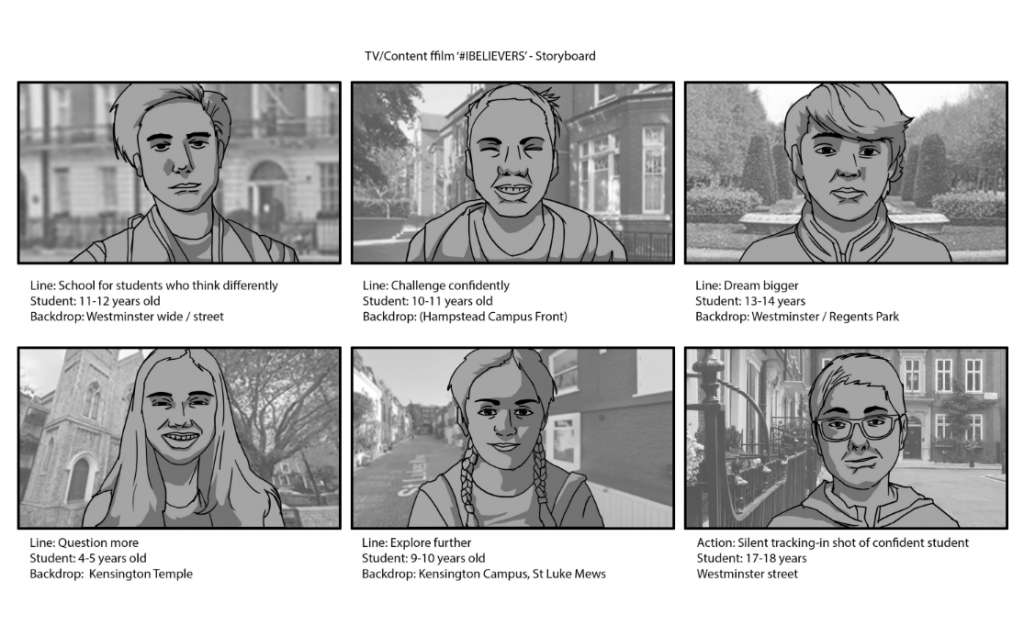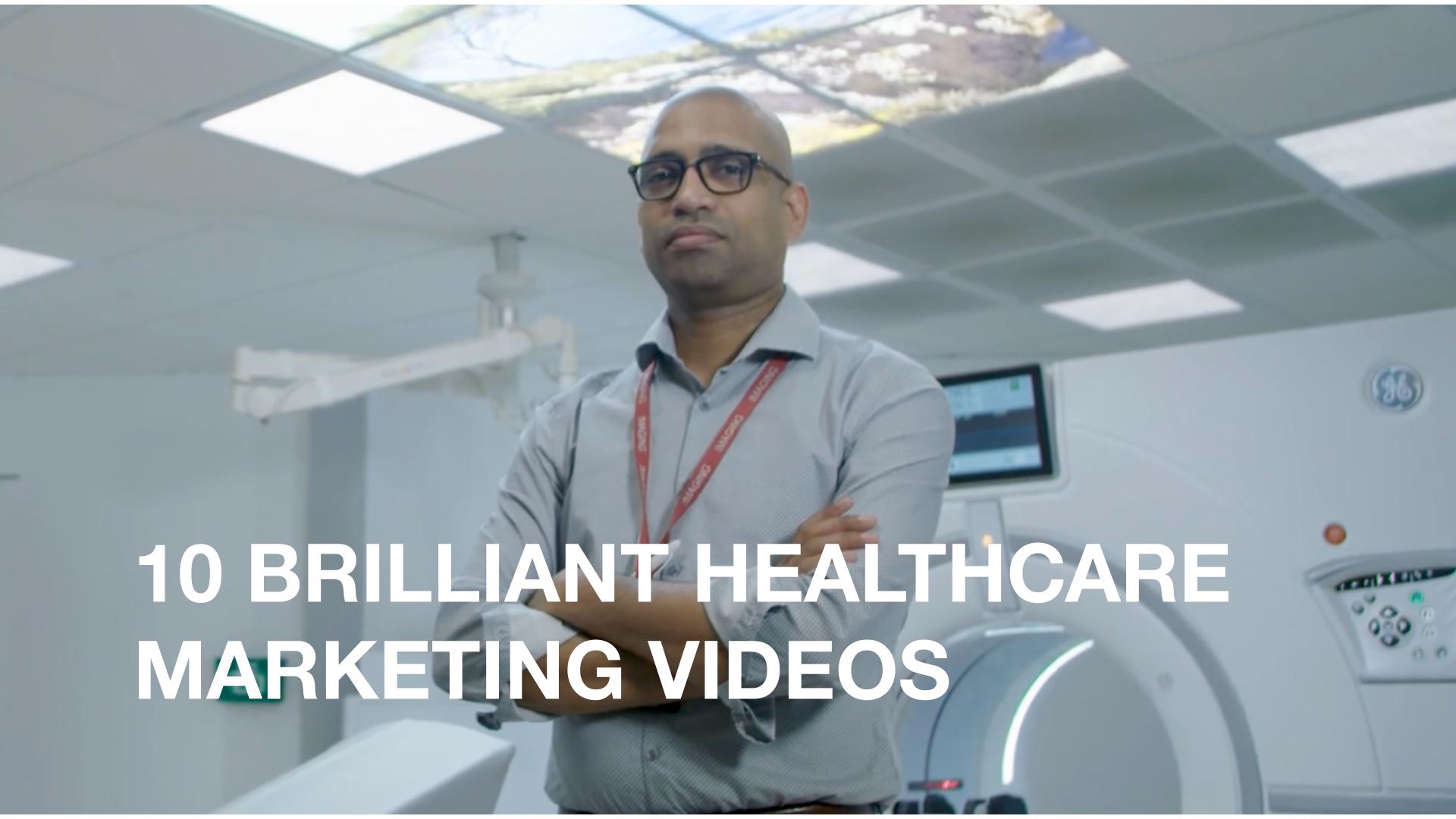A storyboard is what turns a good idea into a great marketing video. It’s what makes them such a critical part of the creative process but one that many marketing teams are still unfamiliar with.
So this guide aims to fill that gap, to provide everything you need to know about:
- What storyboards are
- Why they’re so important
- How to create a storyboard
Whether you’re creating your own marketing video or working with a video content agency, this should give you the knowledge you need to start creating effective storyboards.
What is a storyboard?

A storyboard is a visual timeline for a movie, video or animated sequence. It’s a device that was pioneered by the Walt Disney studio in the 1930s to help plot out their animated movies.
Storyboards can take many forms but traditionally they use a format that’s similar to a comic book strip with each panel depicting a different shot or scene. The visuals can range from simple stick figures and abstract shapes to detailed sketches.
Whatever the form, the end goal is to provide a preview of how a finished sequence will fit together. It acts as a kind of visual ‘dress rehearsal’ to make sure everything works before the time and costs of production.
This makes storyboarding particularly important for animations and high-end film productions where the costs of making changes during production are highest.
What’s the difference with a mood board?
A mood board provides a preview of the look and feel of a visual sequence. Unlike a storyboard, it’s not meant to show what happens during that sequence but specifically, the artistic style, look and overall mood/feel.
Why do you need a storyboard?
To use the old Benjamin Franklin quote, ‘By failing to prepare, you are preparing to fail’. It’s the ability to plan and prepare a marketing video before it’s produced that makes storyboarding so important.
It’s a particularly useful tool when you’re working with a video content agency and collaboration is required between the client and the creative team. Here are the two main reasons why it’s required:
Creating a shared goal
A storyboard helps to ensure that everyone involved in a production is working towards a shared goal. It allows clients and creative teams to all be moving in the same direction and allows remote collaboration to turn an initial brief into a finished marketing video.
Reducing production costs
Making any kind of significant changes during production is liable to be costly and time-consuming, particularly for animations. A storyboard allows changes to be made quickly and cost-free before production. It helps to maintain a fast and cost-effective production schedule.
How do you structure a marketing video?
Creating a storyboard from scratch can be daunting when you’re staring at a blank page. The benefit of working with a video production company is that they can do all of that for you – taking your brief and turning it into a storyboard.
But there’s an underlying structure that just about all effective marketing videos follow. No matter what the style, tone or format is, the basic components of a sequence are going to be:
The hook
What’s the first thing the viewer sees and why should they continue watching. The hook is the way that a marketing video draws the viewer in – they have to be intrigued or reassured that what lies ahead is going to be worth watching.
The problem
What problem is your product or service solving? This needs to be something that resonates and connects with your target audience – something they’re familiar with and want to know the solution to.
The solution
With the problem established, you can now present the solution. What does your product or service do – how does it work and how does that tackle the problems highlighted. What are the pain points that are being removed?
A call to action (CTA)
What do you want the viewer to do with this information? How can they connect with your organisation or access the solution that has been proposed? This could be clicking on a link, signing up for a service or providing contact details.
Think of these as the ingredients of a successful marketing video. A video doesn’t have to follow this exact pattern and the boundaries between the categories can be blurred but these are the essential elements you need.
How to create a marketing video storyboard
If you want to handle storyboarding in-house then there are multiple approaches you can take. The first decision is what format you want to use to create the storyboard.
The most basic approach uses paper, pen and simplistic stick figure drawings but there is also a range of online and digital tools available. There are specific online services such as [Boords] and [StoryBoardThat].
Presentation software such as Google Slides or Microsoft Powerpoint can also be used along with art packages such as Adobe Photoshop and Illustrator. Once you’ve chosen a format you can start putting the storyboard together.
Here’s a look at how to approach it:
Understand the limitations
Before starting any storyboard, you should have some idea of what you want to create. When you’re working with an external video agency this will be outlined in the initial brief. It sets out what you want to produce, along with an idea of the cost and time limitations that need to be worked within.
You should have already figured out the basics about:
- Type: Is it live-action or animated?
- Goal: What needs to be communicated?
- Format: What are screen dimensions – square, 4:3, 16:9?
- Length: Will it last 15 seconds or 15 minutes?
- Tone: Irreverent/quirky or serious/authoritative?
- Budget: What are the budget limits?
- Timescale: When does this need to be completed?
This information should be used to ensure that any storyboard that’s created is practical, achievable and ‘on message’.
Establishing the essentials
What are the elements that need to be communicated? For most marketing videos this is going to include those key components – the problem, the solution and a CTA.
If you are promoting a product then you need to be showing it off and getting across the problems that it’s solving. A video can do much more than this – but this is the essential element.
If you are promoting a brand – what’s the core message that you want to get across? How can viewers connect and interact with your organisation?
Construct a narrative
Once you have identified the essential elements, you can use them as building blocks with which to create a narrative. Start plotting out scenes and pivotal points during the sequence.
No matter how simple or short a video is, it still needs to have some kind of narrative structure. You still need to take the viewer on a journey by binding elements together to create an engaging and coherent presentation.
Start identifying shots and placing them in a sequence. Each panel within the storyboard should provide enough visual information to show what will be seen. This can be done with stick figures or simple abstract objects to represent people, places or products.
The amount of detail you include will depend on the type of marketing video being produced. An animated sequence will require a much more intricate storyboard treatment than something like a live-action video that consists mostly of interviews.
Think about movement
As a storyboard uses a static comic book format, it doesn’t capture movement. That’s something that has to be added with directions and markers. Rather than a plodding sequence of shots, a good storyboard will show how things flow together.
Notations can be used to indicate camera movements – zooms in/out, pans, cuts, fades and transitions between shots and scenes. For motion graphic style marketing videos, this kind of dynamic movement is particularly important to plot out.
Sync visuals with script
If your video includes a voiceover or dialogue then you should try to block out roughly how this links to the visuals. The storyboard doesn’t need to include a finished script but it should indicate where speech will be placed and how long it will last.
What are the benefits of using a video content agency?
Creating a storyboard is something that anyone can do but doing it well is not easy. That’s why industries such as animation and high-end advertising employ artists to work specifically on storyboarding.
It’s a crucial part of the process that requires a combination of creativity and the knowledge to tailor a storyboard that delivers the marketing objective while staying within the boundaries of the budget and format.
It’s this experience that you benefit from when working with a dedicated agency such as Kartoffel Films. With a London-based animation studio, the creative team has more than a decade’s worth of experience in taking a brief and turning it into the kind of storyboards that create great end-products.









